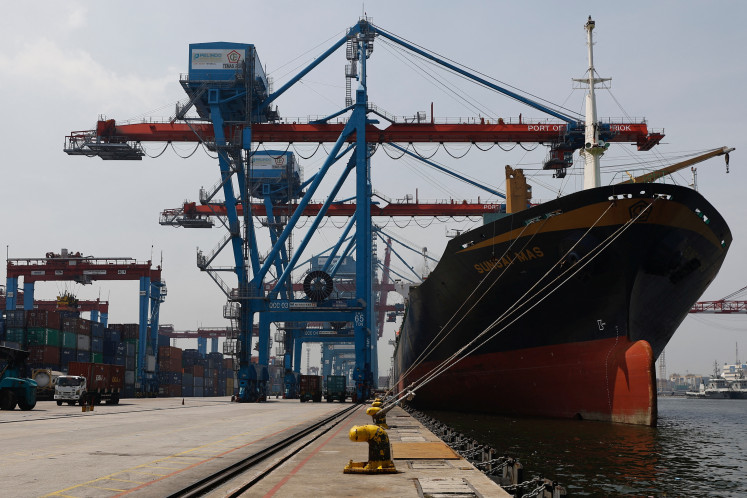Joining efforts to fight forest fires
Forest and land fires frequently hit the country when the dry season comes
Change text size
Gift Premium Articles
to Anyone

F
orest and land fires frequently hit the country when the dry season comes. Currently, fires are facing Riau and, as has happened in the past, they may occur in Jambi, South Sumatra, West Kalimantan, Central Kalimantan and East Kalimantan.
The disaster plays havoc on the environment and sparks health concerns due to the haze it creates. It affects not only Indonesia but also Southeast Asian neighbors.
The worst came in 1997-1998 when a climatological disturbance called El Niño-Southern Oscillation (ENSO) caused large-scale wildfires that impacted the air quality of the Southeast Asian region.
To mitigate the disaster, all members of the regional grouping, ASEAN, signed in 2002 the Agreement on Transboundary Haze Pollution (ATHP). Nevertheless, for almost 12 years the implementation of the ATHP was ineffective because Indonesia, as a source of haze pollution, refused to ratify the treaty. Only on Sept. 16, 2014, at the end of then president Susilo Bambang Yudhoyono's term, did Indonesia ratify the pact.
However, despite the ratification, challenges and obstacles stand between Indonesia and the implementation of the treaty. The government faces difficulties in countering forest and land fires for three reasons.
First, most of the forest areas in Indonesia are open access. This means there is no institution that manages the forest areas and there is no institution that can quickly respond in the event of a fire. Indonesia has approximately 71 million hectares of production forests and only around 40 percent of them fall under an institution in the form of forest concession (HPH/IUPHHKHA/T) that can allocate resources to fight the fires.
The Environment and Forestry Ministry has Manggala Agni (firefighter brigades), who work professionally in the field. However, with huge areas to control, they cannot fight fires efficiently. Ideally, every inch of forest area should be controlled by one institution or Forest Management Unit (FMU). The FMUs would be responsible for managing resources in the forests including to fight fires.
The problem is that FMUs are not yet developed in all forest areas. As of 2014, the ministry had established 120 FMUs, covering a total of 20 million hectares, from a target of 629 FMUs.
Second, there is a lack of institutions to fight fires on land or in agricultural areas such as plantations and peatland that are outside forest areas. The Agriculture Ministry, which holds the responsibility to oversee plantation areas, does not have a special institution to fight land fires.
The responsibility should shift to plantation companies and smallholders as the users and owners of the land. However, when it comes to massive land fires, the plantation companies and the smallholders cannot overcome the fires and they need assistance from the government.
In addition, in many cases smallholders and plantation companies are also blamed as the main actors behind land fires due to land clearing. Giving them the responsibility of firefighting will not be effective as long as the slash and burn technique, which is the cheapest method of land clearing, is still practiced in plantation areas.
Third, there is a lack of coordination among stakeholders. Coordination among stakeholders is crucial in forest and land firefighting. Failure in coordination can reduce the national capacity to counter land and forest fires. Poor regulation of the responsibility of each stakeholder is hindering the coordination among stakeholders.
Forest and land firefighting should involve many actors, including the central government, local governments, land owners, land users and local communities. The roles of each stakeholder must be formulated to make the responsibility of each stakeholder clear.
That Indonesia has already ratified the ATHP treaty means the responsibility to mitigate forest and land fire disasters is fully in the country's own hands. Indonesia cannot depend upon the assistance of other countries and this is an uphill challenge.
Because the FMUs are essential in managing forests and also to prevent forest fires, the first crucial step that has to be taken by the government is accelerating the formation of the FMUs.
In the long term, the FMUs will be effective in handling forest fires because they will manage the forests as their assets.
Moreover, in order to improve the effectiveness of forest and land firefighting and to improve government capacity, it is important to merge the regional fire agencies with Manggala Agni to form a single institution. This new unit will be able to fight fires not only in cities and regencies but also in forest and land areas.
Such integration will provide each region with more human resources to fight forest fires.
___________________________
The writer, an Asia and the Pacific Policy Society member and alumnus of the Crawford School of Public Policy, Australian National University (ANU), works for the Directorate of Forestry and Water Resources Conservation at the National Development Planning Board (BAPPENAS). The views expressed are his own.









